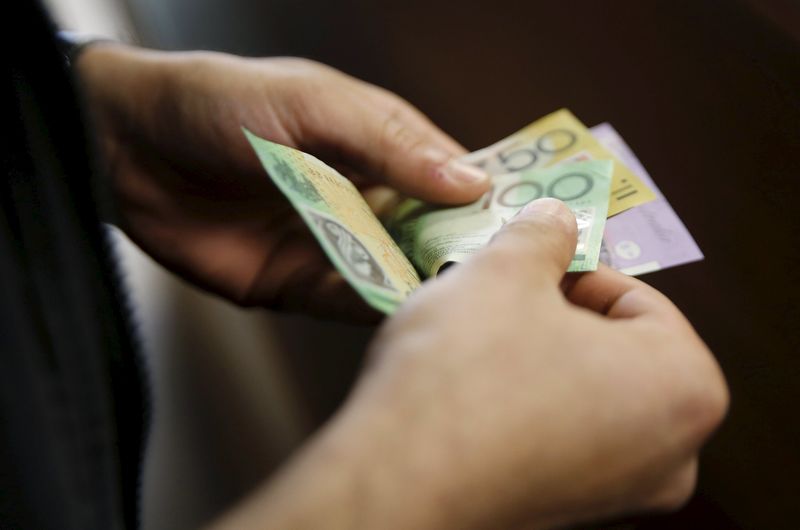By Cecile Lefort and Charlotte Greenfield
SYDNEY/WELLINGTON, Aug 22 (Reuters) - The Australian and New Zealand dollars extended losses in thin liquidity on Monday after the U.S. dollar was lifted by speculation the U.S. Federal Reserve may raise interest rates this year after all.
The Australian dollar AUD=D4 slipped to a two-week low of $0.7592, from $0.7628 late on Friday. Chart support was found at $0.7550, a major retracement level of the July-August rally.
It also lost ground against the euro which rose near its highest in two months at A$1.4895 EURAUD=R .
The weakness came after Federal Reserve Vice Chairman Stanley Fischer gave a generally upbeat assessment of the U.S. economy, giving bulls a reason to buy the U.S. dollar.
Investors were now awaiting comments by Fed Chair Janet Yellen later this week at the annual economic symposium in Jackson Hole, Wyoming.
Markets are implying around a 50-50 chance of a Fed hike by the end of the year but are not fully priced for move until mid- 2017.
The currency market has been recently buffeted by conflicting views on U.S. monetary policy.
Still, the Aussie remained stubbornly high, having touched a three-month high of $0.7760 earlier in August.
"The A$ has proven rather resilient thus far in 2016 and is currently not far from the highs for the year," said Su-Lin Ong, a senior economist at RBC Capital Markets.
She said part of this strength is due to further global easing and historically low rates lending support to higher yielding Australian dollar assets.
"The latest monthly data from Japan highlight ongoing demand from this key investor base who have been net buyers for 11 of the last 12 months," she said.
The New Zealand dollar NZD=D4 edged down to $0.7225, from as high as $0.7291 on Friday.
"A turn in the domestic growth story or a more positive USD environment still seem to be the only real factors that could see the NZD turn meaningfully lower," said ANZ senior economist Philip Borkin, in a research note.
New Zealand government bonds 0#NZTSY= eased, sending yields 1 basis point higher at the short end of the curve and 8.5 basis points higher at the longer end.
Australian government bond futures eased, with the three-year bond contract YTTc1 off 4 ticks to 98.600. The 10-year contract YTCc1 fell 4.5 ticks to 98.0850, while the 20-year contract YXXc1 was steady at 97.5475.
Australian two-year bonds AU2YT=RR now offer only 68 basis points more than their U.S. counterpart US2YT=RR , the smallest premium in a decade.
